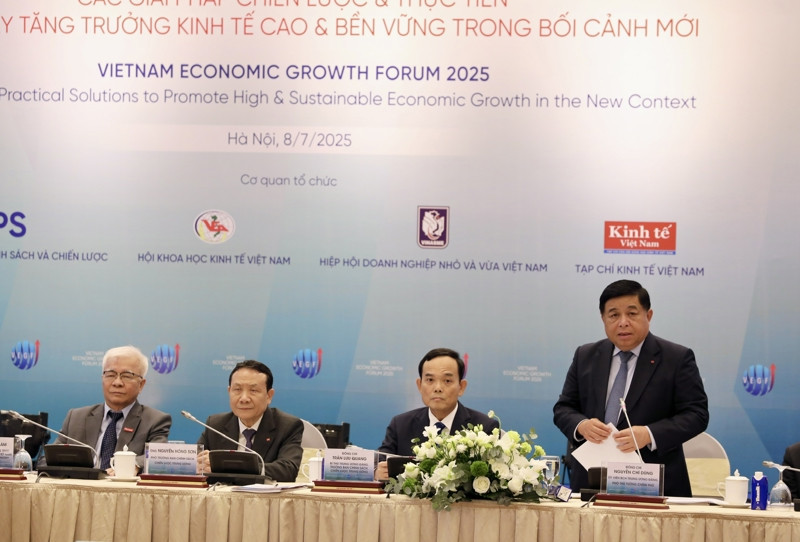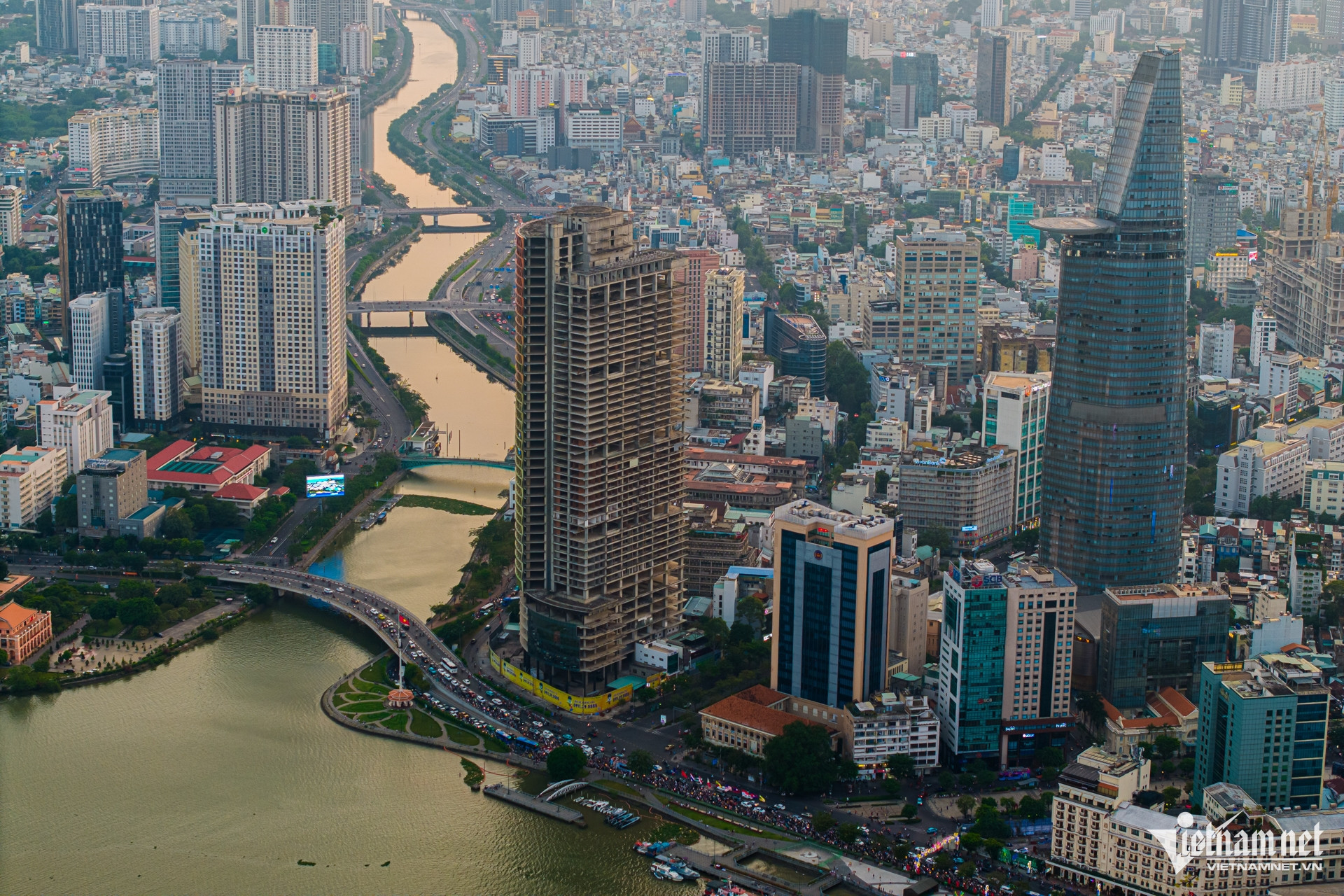At the Vietnam Economic Growth Forum 2025 on July 8, Deputy Prime Minister Nguyen Chi Dung delivered a clear message: “We have no choice but to go faster and grow stronger, or risk being left behind.”
Despite global uncertainties, double-digit economic growth is no longer optional but essential if Vietnam hopes to meet its development milestones by 2030 and 2045 as outlined in Party resolutions.
The Deputy Prime Minister revealed that the 10% growth target will be included in the resolutions of the 14th Party Congress. For now, the goal is to achieve 8% growth in 2025 to build momentum. However, he cautioned that unless institutional bottlenecks - particularly in land management and investment environments - are addressed, high growth will remain just an aspiration.
$235 billion stuck on paper

One of the most striking revelations in his speech was the number of delayed projects: 2,887 nationwide, with a total investment of $235 billion and covering 347,000 hectares.
This figure surpasses the 2,200 projects mentioned by Prime Minister Pham Minh Chinh at a recent National Assembly session.
This enormous pool of capital remains frozen due to legal complications - an issue that business associations have long decried. Yet this same volume of delayed investment represents latent power. If unlocked, these projects could provide a major supply-side boost, a prerequisite for long-term and sustainable growth.
The barriers are not financial or technical, but largely institutional - especially involving land procedures, planning, investment, and environmental regulations. Without bold and transformative reforms, this capital will remain clogged, wasting national resources and hindering economic recovery.
The Deputy Prime Minister noted that the government is preparing to revise three key laws - Land, Planning, and Geology & Minerals - during the National Assembly’s late-2025 session to unlock these capital flows.
Institutional reform must pave the way
“To achieve double-digit growth, we need revolutionary development,” emphasized the Deputy Prime Minister. Among the three strategic breakthroughs - institutional reform, infrastructure, and human resources - institutions take the lead.
Vietnam’s legal framework must be stable, transparent, internationally aligned, and - most importantly - practically enforceable. Delegation of power must be clear and tied to accountability. Many projects are stalled because each level of government waits on the other, or due to unresolved fears over legal liability.
Double-digit growth is impossible if infrastructure remains stagnant. Key projects such as the North-South Expressway, Long Thanh Airport, high-speed rail, and inter-regional transport links must progress rapidly under transparent, investor-friendly financing mechanisms.
On energy, Vietnam urgently needs to restructure its power market, expand clean and renewable energy, and remove bottlenecks in transmission, grid connection, and electricity pricing. A stable and affordable energy system is indispensable for production and investment.
Major cities like Hanoi and Ho Chi Minh City must also make breakthroughs in urban transit. Taking over a decade to complete the first metro lines is a costly lesson in delays that must not be repeated.
New development spaces from provincial mergers

Administrative reorganization is not just about streamlining the state apparatus, but also creating new development zones. Merging provinces saves budget and fosters new growth poles, enhancing regional links and leveraging local strengths post-consolidation.
Ho Chi Minh City could emerge as a mega-city integrating nearby regions, while merged provinces in the delta and mountainous areas could synergize infrastructure, workforce, and policy to generate stronger growth momentum.
A modern economy needs active participation from private firms, state-owned enterprises, and foreign direct investment (FDI). Sustainable growth requires ecosystems where large firms lead in technology transfer and set benchmarks for SMEs.
Rather than vague “investment invitations,” Vietnam must offer truly competitive incentives to attract strategic investors - global “eagles” with core technologies and spillover potential. At the same time, Vietnamese companies should be encouraged to rise up the value chain and reinforce domestic economic resilience.
Vietnam has averaged 6.4% growth over the past two decades. But without aggressive reform, without “new thinking, new vision, new mindset,” the nation will not escape the middle-income trap - let alone reach the goal of $13,000 per capita income by 2045.
“The targets are high, the challenges are immense,” said the Deputy Prime Minister. “But precisely because of that, we must act decisively - free the constraints that are stifling our development potential.” Unblocking frozen capital, reviving stalled projects, and simplifying obstructive procedures could deliver the breakthrough Vietnam urgently needs.
Tu Giang